Recent Articles
Popular Makes
Body Types
10 Things You Need to Know About the 2017 Buick LaCrosse
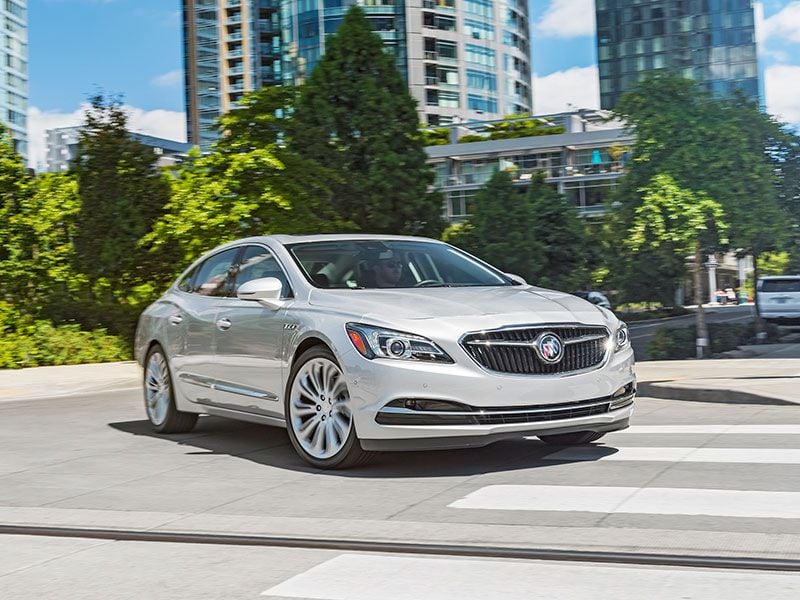
2017 Buick LaCrosse front angle ・ Photo by General Motors
Buick has redesigned its LaCrosse for 2017, with a new platform, a new engine, and new styling language. As the largest sedan in the Buick lineup, the LaCrosse now carries the mantle as the company's flagship vehicle. Here are 10 things you need to know about the 2017 Buick LaCrosse.
1) Buick is trying hard. Really, really hard.
The new 2017 Buick LaCrosse is not for the early-bird-special set. Even so, while Buick seems to be shaking off its old-man-car image—largely due to attrition—the brand is hardly a hotbed of excitement for young buyers (at least not in the US; over in China, the kids love Buick). It’s a state of affairs with which Buick is not content: The company has put its best and brightest on the task of designing the new LaCrosse and come up with something that, if not to everyone’s taste, stands out from other Buicks and—and from the competition.
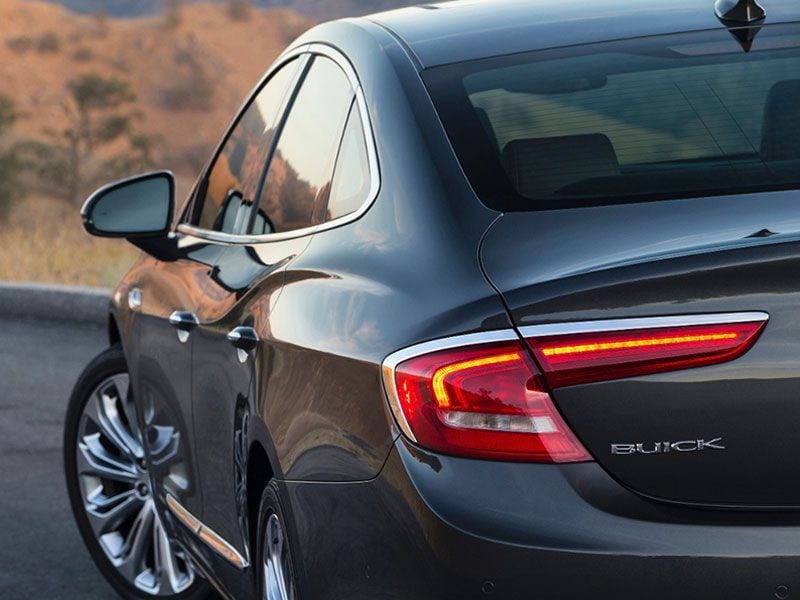
Photo by General Motors
2) Styling: A 2017 Buick LaCrosse high point.
Buick put a lot of time into the new LaCrosse’s looks. Check out the sharp creases that run high on the body side: Buicks designers put a lot of sweat equity into getting the curves just right. The new car looks longer, lower, and leaner than the LaCrosse it replaces. To be honest, some might miss the upright lines of the old LaCrosse; it had a comforting familiarity and solidity, like the afghan your great-grandmother knit by hand. While we can’t say the new 2017 Buick LaCrosse gives us that same feeling of warmth, it does look unique and attractive (and better in lighter colors than darker ones, if you ask us). It will catch your eyes in a way the old LaCrosse didn’t.

Photo by Buick
3) The 2017 Buick LaCrosse interior is lovely.
Buick designers lavished as much effort on the interior as they did on the exterior. The cabin design is artful and elegant, with a sweeping dash that blends into the door panels and high-quality materials almost everywhere you look. Even the steering wheel is handsome. We’re especially fond of the wood trim slathered across the dashboard, but Buick engineers are most proud of the chrome trim piece that underlines it. The simple engineering solution would be to break it up into pieces, but the designers wanted a single, uninterrupted swath of chrome, and the engineers delivered. What we like even better is that form does not yield to functionality: The 2017 Buick LaCrosse has a refreshingly simple control layout, a rarity among lavishly equipped luxury sedans, and the infotainment system—Buick calls it Intellilink—has beautiful graphics and a straightforward, easy-to-learn interface.

Photo by General Motors
4) ...but the LaCrosse interior is not perfect.
For all the emphasis on genuine materials, we were surprised to see a few pieces that looked out of place—most notably the cheap-looking black plastic that cuts a wide swath along the center stack, extending from the armrest to the climate controls. It blends in on cars with a black interior but sticks out like a sore thumb with lighter colors. This same material is used on the doors, surrounding the power window switches, where it is prone to fingernail scratches. It was already starting to look distressed on our test car, and we can’t imagine how it will hold up under regular use.
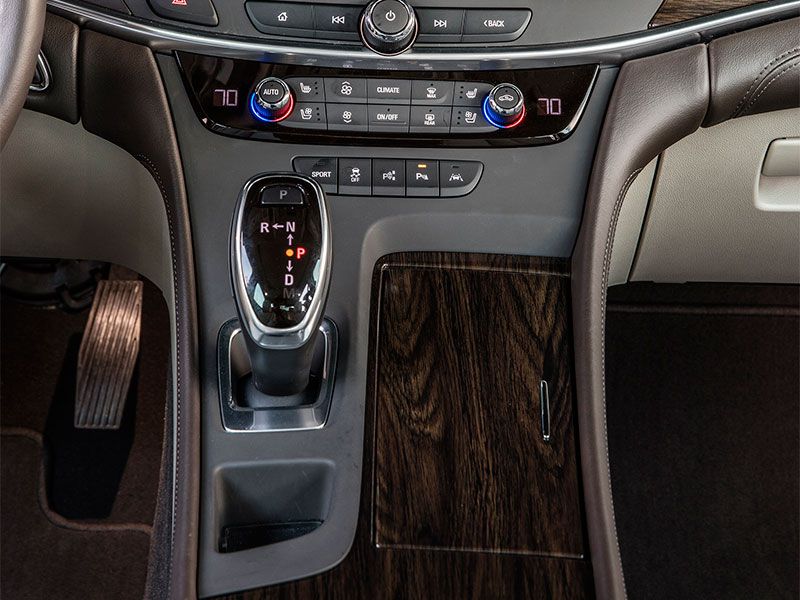
Photo by General Motors
5) The 2017 Buick LaCrosse: Not a snoozer to drive.
The new LaCrosse’s styling offers the promise of driving excitement, and the chassis delivers. There are two very different suspension setups: Cars with 18-in. wheels and all-wheel-drive cars get a more conventional MacPherson strut front suspension setup, but front-drive cars with 20-in. wheels use Buick’s “Hi-Per Strut” front suspension and electronically variable dampers. Both systems are smooth and admirably quiet, and the LaCrosse corners more aggressively than you might expect it to, especially with the fancier setup. The LaCrosse offers an all-wheel-drive system with a torque-vectoring rear axle (that can alter power delivery from side to side), but it’s only available in the top-of-the-line model and doesn’t come with the more advanced suspension. Too bad.
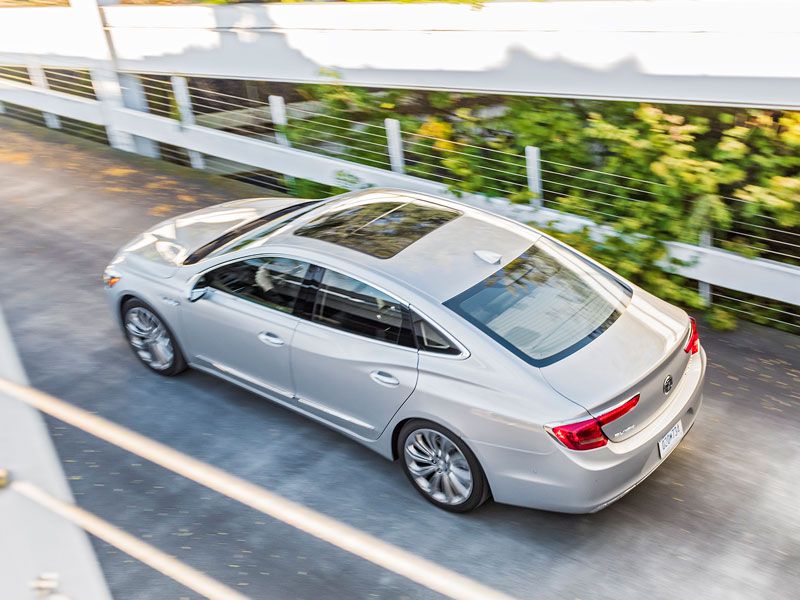
Photo by Buick
6) Still Conventional: The Engine
General Motors has been doing some pretty fancy things with turbocharged 4-cylinder engines, and we’ve been very pleased with the performance of the 2.5-liter turbo four in the Cadillac CT6. So we were surprised to learn that the only choice for the LaCrosse is a 3.6-liter V6 engine. But this isn’t the old familiar 3.6 from the previous-generation LaCrosse: It’s a completely reworked edition, one that delivers 310 horsepower and can run on four cylinders under low power demands to save fuel. The new 2017 Buick LaCrosse wasn’t quite as quick as we expected, but this luxury sedan merges and passes with authority.

Photo by General Motors
7) It's lighter, but still heavy.
GM has been on a weight-loss kick, working hard to reduce the mass of all of its new designs. (Lighter cars require less power and get better fuel economy; they generally handle better, too.) Buick boasts about lightening the LaCrosse by about 300 lb., but at 3598 lb. for the front-wheel-drive version and 3,840 lb. for the all-wheel-drive car, it's hardly a lightweight. It's within 65 lb. of the similarly sized Chevrolet Impala (which rides an older version of the LaCrosse’s platform) and the larger Cadillac CT6.
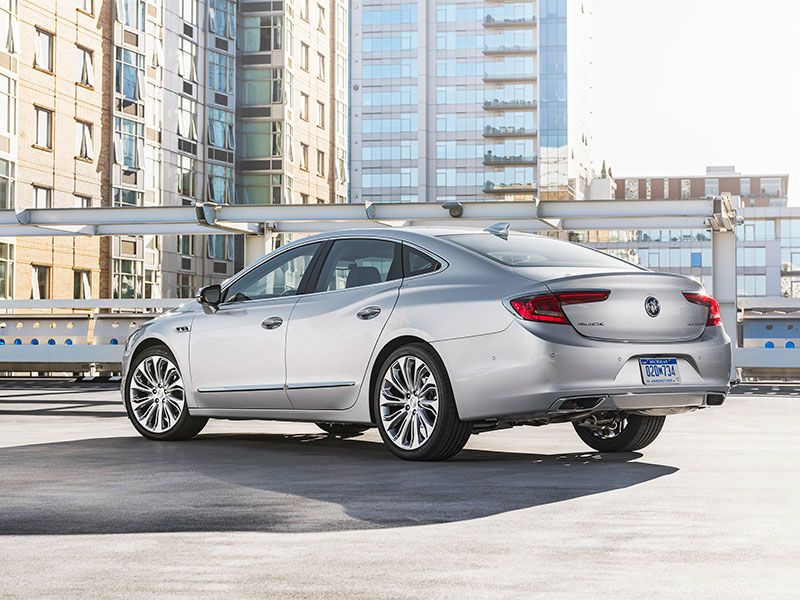
Photo by General Motors
8) What's with the shifter?
Most automakers are moving to compact electronic shifters, which take up less space than traditional P-R-N-D-L shifters and allow for fancy tricks like the storage shelf underneath the LaCrosse’s center stack. But these non-traditional shifters have been confusing drivers, and there have been tragic stories of owners run over by their own cars which they thought were in Park but weren’t (most notably Star Trek actor, Anton Yelchin). Operation of the LaCrosse’s shifter appears to be fairly foolproof; putting it in Park requires pressing a button, and it’s difficult to shift the LaCrosse into reverse unintentionally - in fact, it's difficult to shift the LaCrosse into reverse, period. The shift lever still occupies the same physical position whether it's in Park, Neutral, or Drive, and that could create confusion. Space efficiency is all well and good, but we think the P-R-N-D-L arrangement, in which the shifter sits in one position for Park and another for Neutral, is the safest design.

Photo by General Motors
9) All the big-car attributes you’d expect, except trunk space.
People buy fullsize sedans for space, and the 2017 Buick LaCrosse delivers: It’s got plenty of stretch-out room for front-seat passengers, and rear-seaters are treated to plenty of legroom. Those in the back seat will enjoy the same attention to detail and design as front-seaters. But the trunk, at 15 cubic feet, is smaller than we expected—most fullsize sedans offer 17 to 18. Height and depth are good, but the fenderwell intrusions really cut down on the usable width.
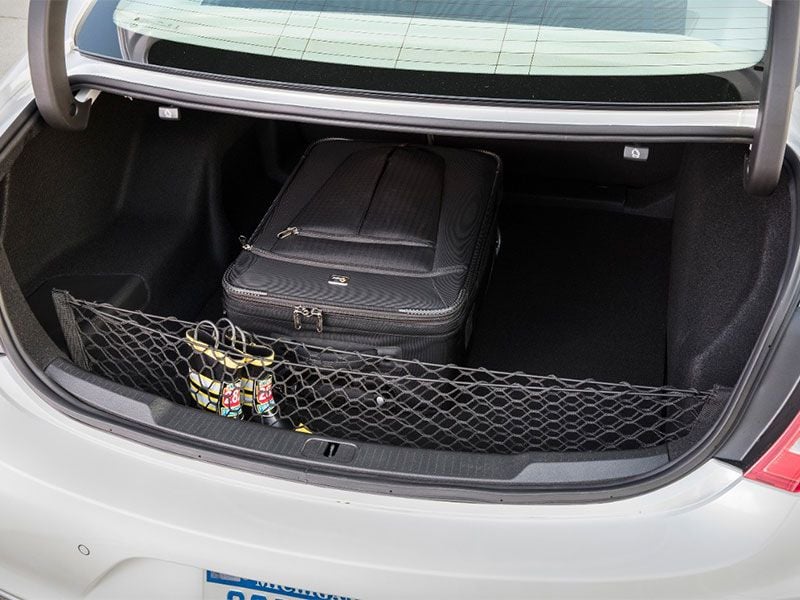
Photo by General Motors
10) The 2017 Buick LaCrosse has stiff competition.
Buick tells us the new LaCrosse is aimed squarely at the Lexus ES. The Lexus is a hard car to beat, but we think the Buick makes a convincing case: In our opinion, the Buick has a better-looking cabin design (cheap plastic bits aside) and its control layout is simpler and easier to use. But the LaCrosse faces other competent rivals that come from an unexpected place: South Korea. The underrated Hyundai Azera and Kia Cadenza (particularly Kia’s freshly updated 2017 version) are lovely, smooth-riding cars with beautiful interiors. Chrysler’s 300 has matured nicely, and even the Chevrolet Impala, though not meant to be a luxury car, feels like a classy ride. The 2017 Buick LaCrosse acquits itself well, but there is no clear leader in this class, and we’d advise you to consider them all.
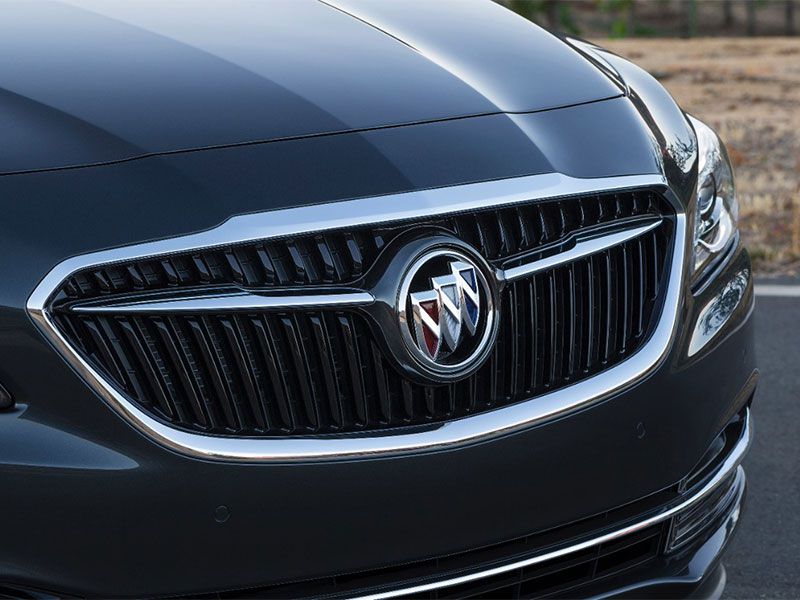
Photo by General Motors